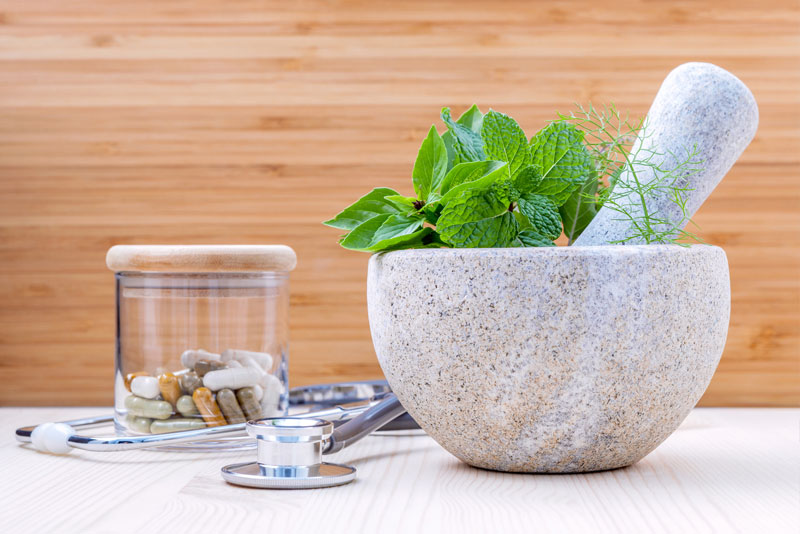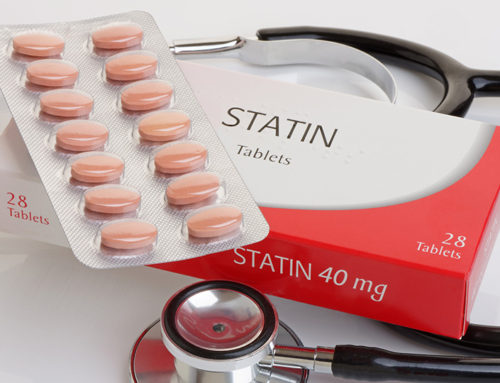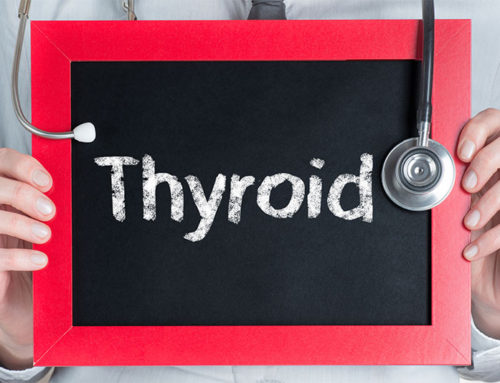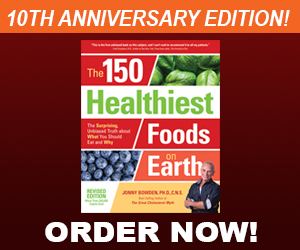Anyone who has ever suffered with pain knows how debilitating it can be, particularly when it’s chronic. Yet the conventional solution—strong, pharmaceutical medicines—are turning out to be worse than the problem. They certainly get rid of pain— but at what cost?
According to the Department of Health and Human Services, the US is in the midst of an unprecedented opioid epidemic. Since 1999, the rate of overdose deaths that involved opioids nearly quadrupled, with over 165,000 people dying just from prescription opioid overdoses.(1,2,3)
And that’s just the hard stuff. Consider that 107,000 patients are hospitalized annually for NSAID-related gastrointestinal complications, and at least 16,500 NSAID-related deaths occur each year just among arthritis patients alone.(4). To put this number into context, it’s about the same number of people who die from AIDS every year. “If deaths from gastrointestinal toxic effects from NSAIDs were tabulated separately in the National Vital Statistics reports, these effects would constitute the 15th most common cause of death in the US”, says a report published in the New England Journal of Medicine. (5)
What’s particularly frightening is that that report was written in 1999. The problem has gotten exponentially worse since then.(6)
Even such common over-the-counter medicines like ibuprofen and aspirin are not without their problems. The excellent website GreenMedInfo has compiled a list of 71 studies that link aspirin to a broad range of side effects ranging from gastric ulcers to cerebral bleeding to H-pylori infections(7,8) and 24 studies linking Ibuprofen to adverse health effects that include anemia, DNA damage, hypertension, and miscarriage(9,10) There have been at least five studies that claim NSAIDs cause heart problems, and one—published in the journal Circulation—showed that NSAIDS can greatly and quickly increase the risk of death in those who have already suffered one heart attack. (11)
Tylenol (acetaminophen) has problems of its own. Acetaminophen is the leading cause of acute liver failure in the United States.(12). Ironically, the standard treatment for acute liver failure is N-acetylcysteine, a relative of the amino acid
L-cysteine, and a regular part of any licensed naturopathic doctor’s treatment arsenal (13).
While strong pharmaceuticals (like OxyContin and Vicodan) and over-the-counter NSAIDs (aspirin, Alleve, Motrin, Advil) certainly have a place in treatment protocols, they’re not the first choice of a naturopathic physician. Many herbs, botanicals, spices, supplements like fish oil and complementary treatments like acupuncture, have a long history of effectiveness in lowering pain and inflammation. Here is a sampling of some effective natural treatments for pain.
Omega-3s
“Fish oil is well-known for its anti-inflammatory properties”, says Michael Cronin, ND, a naturopathic physician in Scottsdale, Az., and past president of the American Association of Naturopathic Physicians. A study comparing ibuprofen and the omega-3s found in fish oil (EPA and DHA) “demonstrated equivalent effect in reducing arthritic pain”. (14) The authors concluded that fish oil supplements “may be a safer alternative to NSAIDs” for some patients.
Curcumin
Curcumin is a wonderful example of a natural medicine. Curcumin is the active compound in turmeric, the bright orange spice used in Indian food and curries. It’s a powerful anti-inflammatory and has been studied for its beneficial effects on the pain of rheumatoid arthritis and osteoarthritis(15) and as an anti-inflammatory agent in neurodegenerative, cardiovascular, pulmonary, metabolic, autoimmune and neoplastic diseases.(16). Since curcumin is not terribly well-absorbed, it’s best to look for products that use the BCM-95 form of curcumin, such as Curamin by Terry Naturally, widely available in health and vitamin stores. Studies show that BCM-95 curcumin is somewhat better absorbed than the garden-variety kind.
Capsaicin
Capsaicin comes from hot chili peppers, and has a long history of use in the practice of natural medicine. It decreases substance P—a compound involved in the transmission of pain signals (17)—and has been shown to be effective in diabetic neuropathy, postsurgical pain, and Guillain-Barre’ syndrome. (18) Patients at the New England Center for Headache were able to significantly decrease the intensity of both migraine and cluster headaches after using capsaicin cream inside their nostrils. (19)
Spices, botanicals, and herbs
Many other spices, botanicals and herbs have a long history of medicinal use. The American Pain Foundation lists, for pain management, ginseng (for fibromyalgia), kava kava (for tension headaches), St. John’s Wort (for arthritis and sciatica) and valerian root (for spasms and muscle cramps.) Ginger contains potent phytochemicals which help flight inflammation. Feverfew, a medicinal herb, has been used as a headache remedy for centuries, as has butterbur. Some over-the-counter products meant to ease pain (like InflaTera or Zyflamend) are mixes of herbs and botanicals like turmeric, ginger and holy basil. Your naturopathic physician will be able to customize combinations of natural substances in the correct doses for your individual situation.
SAMe
SAME-e (S adenosylmethionine) is well known for its effect on mood, but it also helps with joint pain by reducing inflammation. One study showed that SAM-e was as effective as most NSAIDs in reducing arthritis-related achiness. (20)
Heat and ice
Heat and ice have long been used as traditional remedies for pain. Personal trainers are taught the acronym RICE for dealing with typical athletic injuries: Rest, Ice, Compression and Elevation. According to the University of Rochester Medical Center Website, heat and cold are the two most common types of nonaddictive, noninvasive, non-toxic pain-relieving therapies both for joint pain and for muscle pain. (21). Ice decreases blood flow to the injury (lowering swelling and inflammation) while heat opens up blood vessels, supplying oxygen and nutrients to the area and relaxing sore muscles.
Acupuncture
Acupuncture originated 3000 years ago in China, and has a long history of being used for pain. (22) Guidelines issued by the American College of Physicians recommended that acupuncture be considered as one of several nondrug approaches physicians should consider with patients who have chronic low-back pain. (23)
Resveratrol
Reseveratrol is a good example of a natural medicine that can be used in conjunction with conventional pain treatments, making those medicines even more effective (and, hopefully, reducing the amount of those medicines needed to be prescribed.) Resveratrol has been investigated for decades for its multiple beneficial effects on everything from aging to inflammation to insulin sensitivity. But in the last few years, it’s been recently noted that resveratrol preserves the pain-relieving effects of morphine (24,25), making a dose of that powerful (but potentially dangerous) medication last a lot longer so you need less of it. Resveratrol also seems to have the ability to lower substance P—a compound in the body that transmits pain impulses. (26) Animal studies show that resveratrol lowers neuropathic pain by balancing the release of pro-inflammatory and anti-inflammatory cytokines. (27)
Summing Up
This is a far from complete list, but it should give you an idea of the range of available pain treatments that do not require toxic and dangerous drugs with their significant potential for addiction.
Though there are certainly MDs who are aware of some of these treatments, most are not. Naturopathic physicians, by the very nature of their training, are deeply familiar with all of them, and will develop an individualized, multi-modal, non-toxic treatment plan before reaching for the “hard stuff”.
_____________________________________________________________
REFERENCES
1) http://www.hhs.gov/sites/default/files/Factsheet-opioids-061516.pdf
2) CDC Vital Signs, 60(43): 1487-1492
3) CDC. Wide-ranging online data for epidemiologic research (WONDER). Atlanta, GA: CDC, National Center for Health Statistics; 2016. Available at http://wonder.cdc.gov.
4) Singh Gurkirpal, MD, “Recent Considerations in Nonsteroidal Anti-Inflammatory Drug Gastropathy”, The American Journal of Medicine, July 27, 1998, p. 31S
5) Wolfe M. MD, Lichtenstein D. MD, and Singh Gurkirpal, MD, “Gastrointestinal Toxicity of Nonsteroidal Anti-inflammatory Drugs”, The New England Journal of Medicine,a June 17, 1999, Vol. 340, No. 24, pp. 1888-1889.)
6) Frenk SM, Porter KS, Paulozzi LJ. Prescription opioid analgesic use among adults: United States, 1999–2012. NCHS data brief, no 189. Hyattsville, MD: National Center for Health Statistics. 2015.
7) http://www.greenmedinfo.com/toxic-ingredient/aspirin
8) http://www.greenmedinfo.com/blog/ibuprofen-kills-more-pain-so-what-alternatives
9) http://www.greenmedinfo.com/toxic-ingredient/ibuprofen
10) http://www.greenmedinfo.com/blog/ibuprofen-kills-more-pain-so-what-alternatives
11) http://circ.ahajournals.org/content/115/12/1634
12) http://www.ncbi.nlm.nih.gov/pmc/articles/PMC2504411/
13) ibid
14) http://www.ncbi.nlm.nih.gov/pubmed/16531187
15) http://www.lifeextension.com/magazine/2012/8/safely-manage-joint-inflammation/page-01
16) http://www.ncbi.nlm.nih.gov/pmc/articles/PMC2637808/
17) http://www.ncbi.nlm.nih.gov/pubmed/15334652
18) http://www.ncbi.nlm.nih.gov/pmc/articles/PMC3048583/
19) http://www.ncbi.nlm.nih.gov/pubmed/8495452
20) http://www.ncbi.nlm.nih.gov/pubmed/12019049
21) https://www.urmc.rochester.edu/encyclopedia/content.aspx?ContentTypeID=1&ContentID=4483
22) http://ceaccp.oxfordjournals.org/content/7/4/135.full
23) https://nccih.nih.gov/health/acupuncture/introduction
24) https://www.sciencedaily.com/releases/2012/09/120925114337.htm
25) http://spinalstenosis.org/blog/chronic-pain-relief-improved-resveratrol-morphine/
26) http://www.ncbi.nlm.nih.gov/pmc/articles/PMC3634096/
27) http://www.ncbi.nlm.nih.gov/pubmed/26953646














Leave A Comment